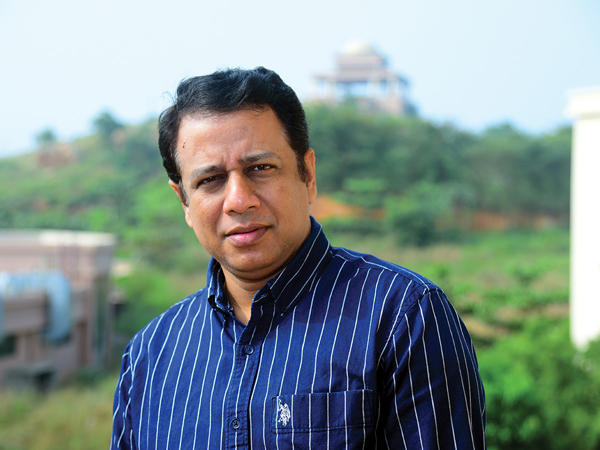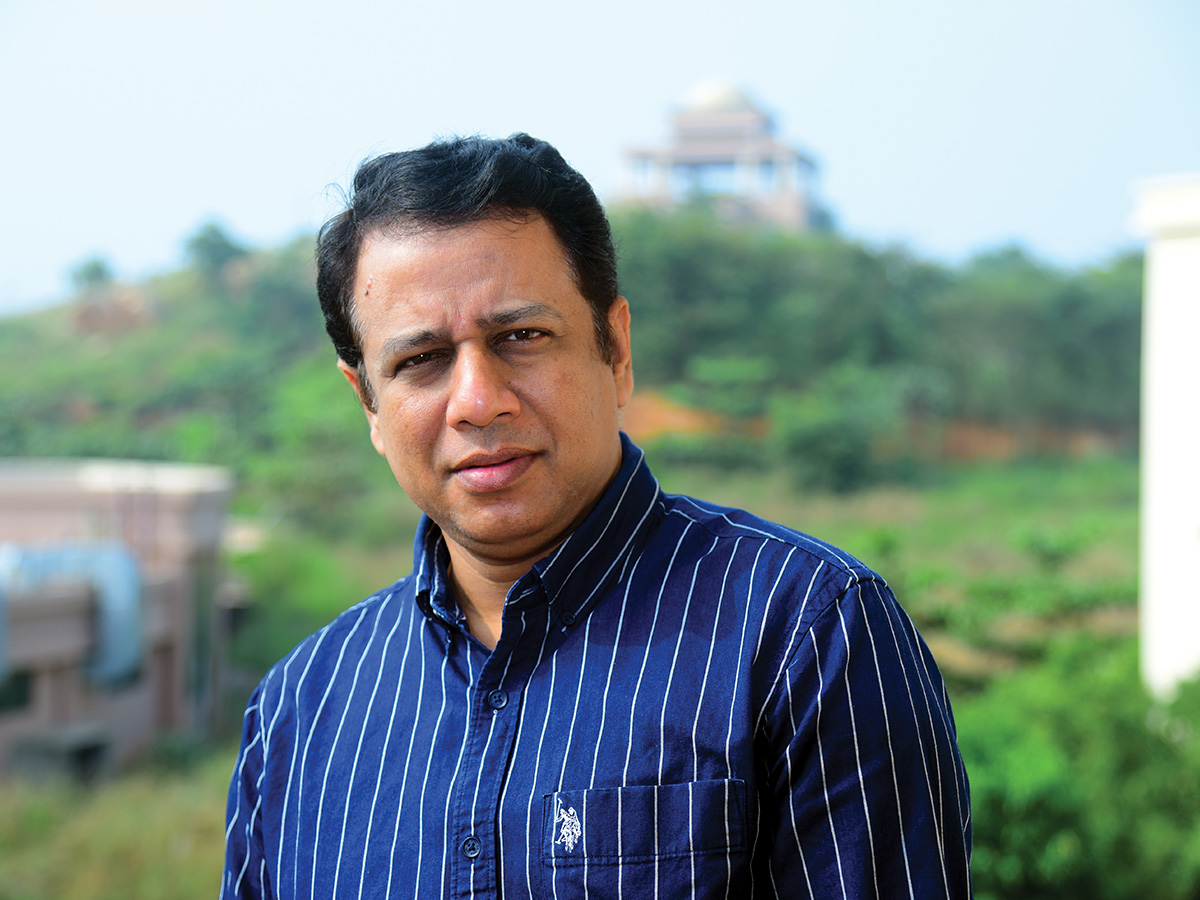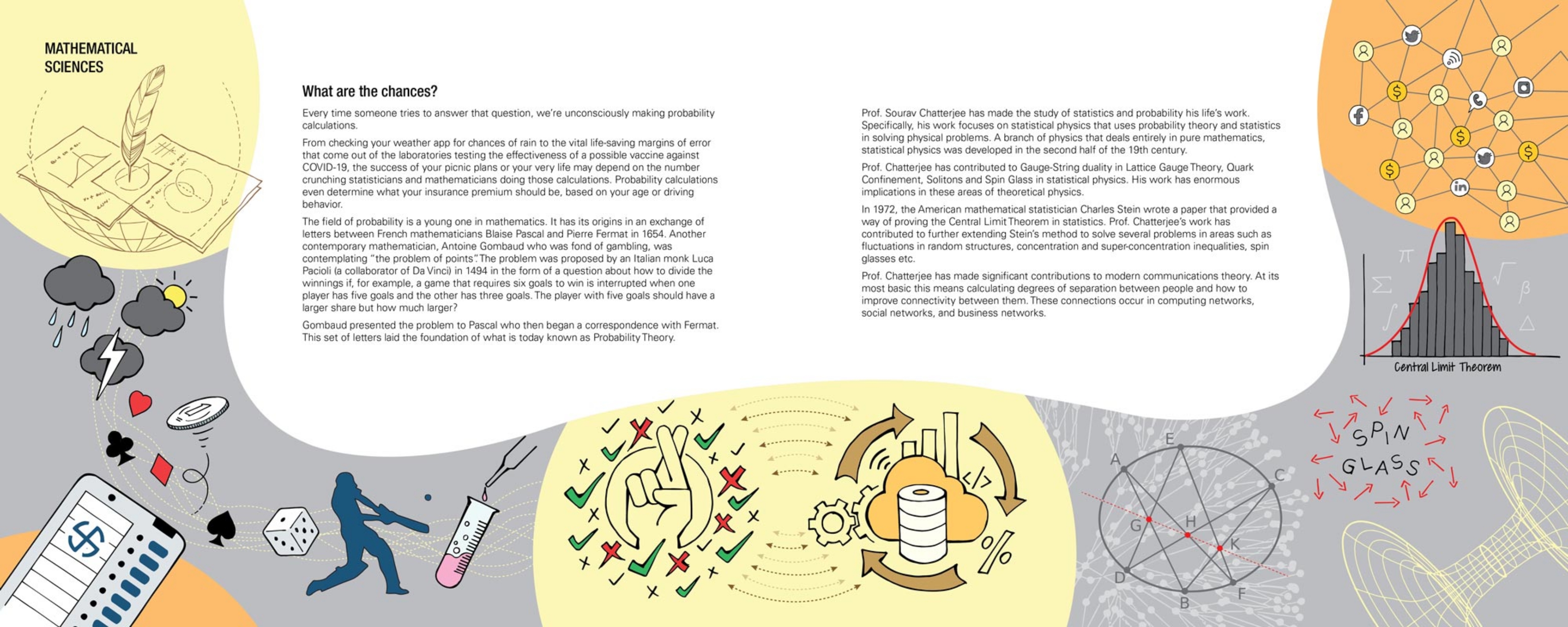The Infosys Prize in Physical Sciences is awarded to Bedangadas Mohanty for investigations of the nuclear force. At the Brookhaven National Laboratory and the European Organization for Nuclear Research he determined the transition temperature of the quark-gluon plasma to hadronic matter, observed heavy antimatter nuclei, observed nuclear spin-orbital angular momentum interactions, and other effects in quark-gluon plasma.
Infographic:
The forces that hold us
Scope and Impact of Work
Prof. Bedangadas Mohanty's contributions have pushed the frontiers of our knowledge of the strong nuclear force.
Known as an energetic leader, he has driven the programs in the STAR experiment at Brookhaven National Lab (USA) and at the ALICE experiment at the European Organization for Nuclear Research (CERN, Switzerland) where he directed efforts towards elucidating important physics results. The quark-gluon plasma (QGP) formed at high nuclear densities and high temperatures cools down to ordinary hadronic matter via a phase transition. By studying, for instance, swings in the net baryon number at the critical point, Prof. Mohanty measured the temperature (around a trillion Kelvin) at which this happens. The implications of this measurement are far-reaching and go beyond nuclear physics, particularly in astrophysics and cosmology.
Prof. Mohanty's work that demonstrated various aspects of the QGP is likely to be emulated by experimenters who follow. His observations of nuclei made of antimatter that are heavier than hydrogen, specifically anti-helium and anti-hypertriton, provide conclusive evidence for these exotic particles after earlier results from experiments in satellites in orbit. Similarly, the uniquely powerful suggestion from Prof. Mohanty to exploit the very high magnetic fields in high-impact parameter nuclear collisions has undoubtedly paved the way for a new class of experiments. Finally, he has established new techniques in his studies of particle-production mechanisms, and in his contributions to searches for fractionally charged particles and Disoriented Chiral Condensates.
Bio
Prof. Bedangadas Mohanty is an experimental high energy physicist at the National Institute of Science Education and Research in Bhubaneswar and at the Homi Bhabha National Institute in Mumbai. He earned his B.Sc. and his M.Sc. in Physics from Utkal University, Bhubaneshwar, placing first in both cases, and his Ph.D. from the Institute of Physics, Bhubaneswar.
Prof. Mohanty is a Fellow of the Indian National Science Academy, New Delhi, of the Indian Academy of Sciences, Bangalore, of the National Academy of Sciences, India, and of the American Physical Society in the USA.
He has held Fellowships and post-doctoral positions at the Variable Energy Cyclotron Centre (Kolkata) and at the Lawrence Berkeley National Laboratory (USA). He has won the Shanti Swarup Bhatnagar Award (2015), the Swarna Jayanti Fellowship (2010-11), and the INSA Young Scientist Medal (2003).
Timeline
Jury Citation
Bedangadas Mohanty expanded our understanding of the strong nuclear force. He is a leader in the STAR experiment at the Brookhaven National Laboratory and the ALICE experiment at the European Organization for Nuclear Research. When a quark-gluon plasma (QGP) is formed in high energy nuclear collisions, it “coagulates” into ordinary hadronic matter via a phase transition. From these experiments Mohanty measured the temperature at which this happens and elucidated various other properties of the QGP.
Additionally, Prof. Mohanty was the first to observe heavier-than-hydrogen nuclei made of antimatter, to first to observe the formation of a QGP fluid with the largest known vorticity, and to study the physics of particle-production mechanisms, fragmentation processes and parton energy loss in the QGP medium. Finally, we note his contributions to searches for fractionally charged particles and Disoriented Chiral Condensates.

The Forces That Hold Us
“The Infosys Prize recognizes your novel contributions to knowledge of the nuclear force. Your leadership and intellectual steering of the STAR (BNL) and ALICE (CERN) collaborations led to measurement of the transition temperature from quark-gluon plasma to hadronic matter. You observed the heaviest antimatter nucleus, searched for and observed spin-orbital angular momentum interactions and found re-scattering and collective effects in quark-gluon plasma. Congratulations, Prof. Bedangadas Mohanty.”



